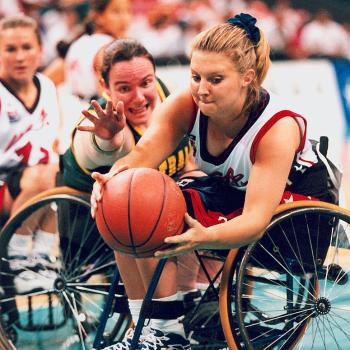. . . Yasha Mounk at The Atlantic is correct:
When the coronavirus first spread to South Korea, many observers pointed to the comparatively low death rates in the country to justify undue optimism. In countries with highly developed medical systems, they claimed, a smaller portion of patients would die. But while more than half of all diagnosed patients in China have now been cured, most South Korean patients are still in the throes of the disease. Of 7,478 confirmed cases, only 118 have recovered; the low death rate may yet rise.
Meanwhile, the news from Italy, another country with a highly developed medical system, has so far been shockingly bad. In the affluent region of Lombardy, for example, there have been 7,375 confirmed cases of the virus as of Sunday. Of these patients, 622 had recovered, 366 had died, and the majority were still sick. Even under the highly implausible assumption that all of the still-sick make a full recovery, this would suggest a case fatality rate of 5 percent—significantly higher, not lower, than in China.
The third fact is that so far only one measure has been effective against the coronavirus: extreme social distancing.
Before China canceled all public gatherings, asked most citizens to self-quarantine, and sealed off the most heavily affected region, the virus was spreading in exponential fashion. Once the government imposed social distancing, the number of new cases leveled off; now, at least according to official statistics, every day brings news of more existing patients who are healed than of patients who are newly infected.
A few other countries have taken energetic steps to increase social distancing before the epidemic reached devastating proportions. In Singapore, for example, the government quickly canceled public events and installed medical stations to measure the body temperature of passersby while private companies handed out free hand sanitizer. As a result, the number of cases has grown much more slowly than in nearby countries.
These three facts imply a simple conclusion. The coronavirus could spread with frightening rapidity, overburdening our health-care system and claiming lives, until we adopt serious forms of social distancing.
This is just plain old science.
We now have a variety of countries running the social experiment on how to handle COVID-19. It’s up to us to decide which model we wish to follow. At the moment we are doing the Italian method. Here’s how that’s working out, in the words of a UK anesthetist getting direct reports from a colleague in northern Italy:
4/ We’ve stopped all routine, all ORs have been converted to ITUs and they are now diverting or not treating all other emergencies like trauma or strokes. There are hundreds of pts with severe resp failure and many of them do not have access to anything above a reservoir mask.
5/ Patients above 65 or younger with comorbidities are not even assessed by ITU, I am not saying not tubed, I’m saying not assessed and no ITU staff attends when they arrest. Staff are working as much as they can but they are starting to get sick and are emotionally overwhelmed.
6/ My friends call me in tears because they see people dying in front of them and they con only offer some oxygen. Ortho and pathologists are being given a leaflet and sent to see patients on NIV . . .
Uncontrolled outbreaks don’t end well. The surge in new ICU cases comes too fast, and the patients need treatment far too long, for existing facilities to handle the numbers. To make it worse, by the time the surge begins, staffing is already short because numerous healthcare providers are already infected due to poor prevention tactics when the first stream of elderly-with-pneumonia began trickling in.
Social distancing, however, is not easily achieved.
Call me a Rerum Novarum Catholic, I’m a firm believer in the use of free markets and private property and minimal regulations to handle most situations most of the time. Nonetheless, the US has some serious obstacles to making social distancing happen, and they are the direct result our failure to live the Rerum Novarum lifestyle.
In the long run, rectifying that situation is not best accomplished through a socialist-style regulatory environment. In the short run, however, several emergency interventions have potential to make a significant difference in how well social distancing can be accomplished:
- Provide automatic unemployment benefits for anyone with reduced hours, furloughs, or layoffs in an any US jurisdiction that declares social-distancing measures, applicable for the time period when those rules are in place.
- Automatic unemployment benefits for caregiving-parents who need to stay home with a child affected by a school closure.
- Temporary lifting of truancy laws so that parents who need to remove their children from school (for example to protect an elderly relative living in the home) can do so, even if the school itself has not closed.
- Childcare vouchers for parents who work in essential services (healthcare, etc.) to offset school closures and extended work hours.
- Debt forgiveness for health care costs related to treating COVID-19.
- Free COVID-19 testing, drive-through style, rolled out nationwide.
The availability of testing is absolutely essential to containing an outbreak. I’ll use myself as an example:
- I live in a region that has documented cases of community-transmission of COVID-19. There is no doubt whatsoever that some people who are currently not identified are infected and contagious.
- It is also the beginning of pollen season and the end of cold and flu season.
- I have intermittent mild symptoms that could be any of things.
- It is highly unlikely I have COVID-19, but it is by no means impossible. We know that some people in my community do. We just don’t know who.
- If I do not have the virus, then moderate social distancing is reasonable, such as me not popping into stores or going to church while symptomatic.
- If I do have the virus, then my entire immediate family should immediately take aggressive steps to avoid infecting others.
- Given that I have mild symptoms, there is no reason whatsoever to seek medical care at this time.
- If I do have the virus and I go in to be tested, I’d likely infect others at the doctor’s office.
- If I don’t have the virus, given that it is in our community and those who have been diagnosed first sought treatment at non-specialists, going in to be tested would be an excellent way to catch the virus.
Thus: Short of ordering every person in an outbreak area into immediate quarantine, drive-through testing is the most effective means of quickly identifying those persons most at risk of being contagious. Free testing encourages people to come out to be tested repeatedly, rather than assuming that if last week the test was negative there’s no sense re-testing if new symptoms emerge.
***
And finally, in case you are wondering why I’m not worried about the stock market? Because the stock market always recovers. Right now, in northern Italy, the people who most need to worry about their retirement portfolios are being left to die, despite very high potential survival rates with treatment, because the hospitals in the wealthiest, best-prepared part of the nation cannot keep up with the surge in cases.
Do not kid yourself. Major industrialized economies do not freely choose to shut down over a little “hysteria.”
Read the signs. Educated Chinese citizens in highly respected professional positions don’t risk arrest in order to warn the world about “just the flu.” Italians don’t close restaurants at 6pm because of “panic.” The nation of Israel isn’t closing its borders because its leadership is prone to fits of worry — indeed, if reputation means anything, we can reasonably assume the Israeli government is acting on better intelligence than many other countries possess.
Any time Iran, Israel, Italy, Japan, S. Korea, Taiwan, Singapore and China all agree on the seriousness of a new situation? We are dealing with something that is not business as usual.
The science is unequivocal. COVID-19 is proven to be present in the community throughout the United States. It is proven to have the ability to absolutely overwhelm your local hospital system. And it is proven that potential epidemics can be slowed down to a manageable, treatable, much less deadly level through social distancing.
I don’t like the conclusion the science leads to, because I like to be relaxed and unbothered and go about my business. But the science is there, and it’s hubris to ignore it.

Artwork: P. S. Krøyer’s painting of a meeting in the Royal Danish Academy of Sciences and Letters, 1897, via Wikimedia, Public Domain.












